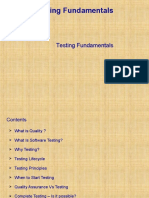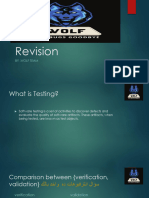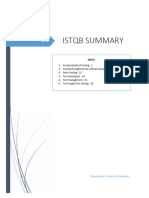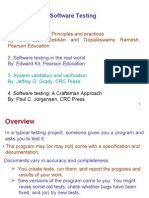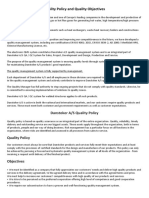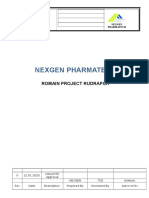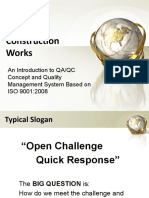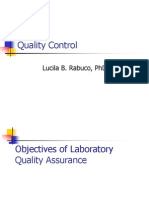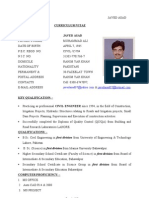0% found this document useful (0 votes)
62 views39 pagesManual Testing
The document provides a comprehensive overview of manual testing, detailing its objectives, principles, processes, and various types of testing. It emphasizes the importance of testing in identifying defects, ensuring software quality, and supporting development methodologies like Test-Driven Development (TDD). Additionally, it outlines the roles, skills, and activities involved in testing, along with the significance of planning and documentation in the testing process.
Uploaded by
aaliyah17394Copyright
© © All Rights Reserved
We take content rights seriously. If you suspect this is your content, claim it here.
Available Formats
Download as PPTX, PDF, TXT or read online on Scribd
0% found this document useful (0 votes)
62 views39 pagesManual Testing
The document provides a comprehensive overview of manual testing, detailing its objectives, principles, processes, and various types of testing. It emphasizes the importance of testing in identifying defects, ensuring software quality, and supporting development methodologies like Test-Driven Development (TDD). Additionally, it outlines the roles, skills, and activities involved in testing, along with the significance of planning and documentation in the testing process.
Uploaded by
aaliyah17394Copyright
© © All Rights Reserved
We take content rights seriously. If you suspect this is your content, claim it here.
Available Formats
Download as PPTX, PDF, TXT or read online on Scribd
/ 39
















